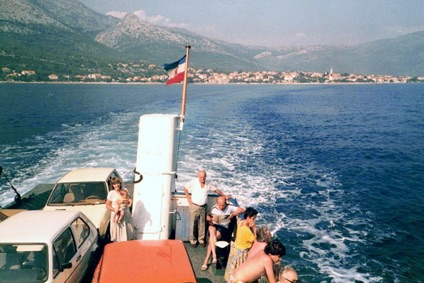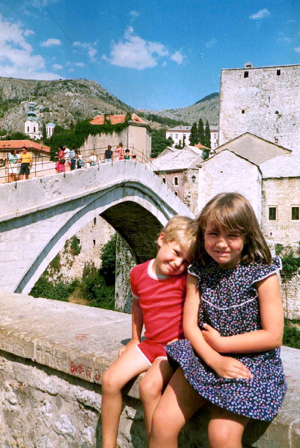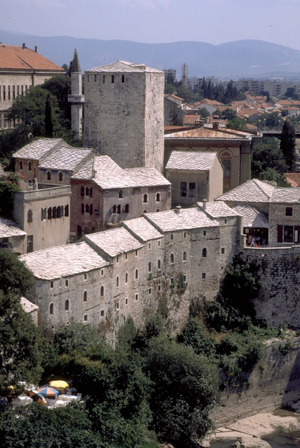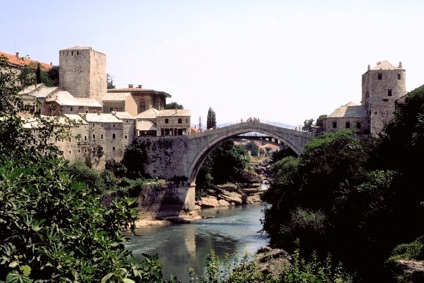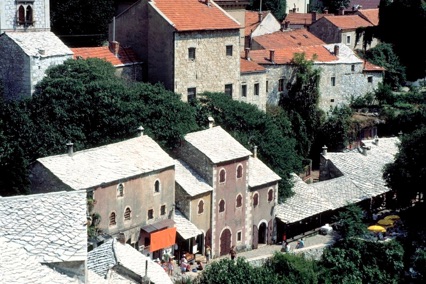Europe 1987

Kyrgyzstan and Tajikistan 2018

We cleaned up our room, showered, and prepared ourselves for departure by 9:00am, as we wanted to catch the first ferry from Korčula back to the mainland. As we approached the car ferry ramp, we could see that there was already a long line of vehicles in front of us, and we only just managed to get a place.
We disembarked the ferry at Orebić, and then did the 20-kilometre drive across the peninsula to Trpanj to take a second ferry to Ploče (the alternative being to take a long 115 kilometre drive via Ston). We had to wait for over an hour at the end of another long queue at Trpanj, and once again, JUST made it onto the ferry, thus narrowly avoiding another two hour wait for the next ferry.
We drove north from Ploče through Metković and then along the very pretty valley of the Nereva River to Mostar, a beautiful old town with Ottoman Turkish architecture. “Most” means bridge, and there was an ancient wooden bridge across the Neretva River at this location as long ago as Roman times. The bridge masters, the “mosteri”, gave the town its name, and its most famous bridge is the Stari Most (Old Bridge), a bold 30 metres long single arched stone structure that spans the river at a height 20 metres above the water level. Completed in 1566 on the orders of Sultan Suleiman I, ruler of the Ottoman Empire (that controlled this area at the time), Stari Most is the symbol of Mostar.
We parked the car and explored the narrow, cobbled stone lanes and Ottoman era buildings, and of course stopped for a while at the 420 year old Stari Most. Quite a few young adults seemed to be having a great time diving into the river from the centre of the old bridge. We took several photos at the bridge, which stands as a symbol of unity as it joins the western bank (which is dominated by ethnic Croats) with the eastern bank that is dominated by Bosnian Muslims. One of the photos was the last photo of Liesl’s wobbly front tooth.
(As a footnote, this bridge was blown up during fighting by Croat paramilitary forces in November 1993 during the brutal and bloody Croat-Bosniak War of 1992-1994. During the fighting, the river became the front line, with Croats on the western bank and Bosniaks on the eastern bank shooting at each other across the river. After peace had been restored, the bridge was re-built in its original design as a symbol of unity and re-opened in July 2004).
We finished our walk around Mostar with a visit to the historic Koski Mehmed Pasha Mosque, during which we were invited to climb the minaret for a stunning view of Stari Most and an overview of Mostar’s historic zone.
Filled with emotion after our visit to Mostar, we continued our drive north via Konjic to Sarajevo, our destination for the day. We found a hotel on the north-western outskirts of the city and spent the night in an apartment with two rooms and two toilets. It was sheer luxury to be able to spread out a little.
That evening Liesl “lost” her wobbly front tooth at dinner time. This was the night that we learned that the Yugoslav tooth fairy is extraordinarily generous; apparently a front tooth in Yugoslavia is worth the largest, shiniest silver coin in circulation – 100 dinars (about 12 pence).

Day 29
Korčula to Sarajevo
Monday 10 August 1987


